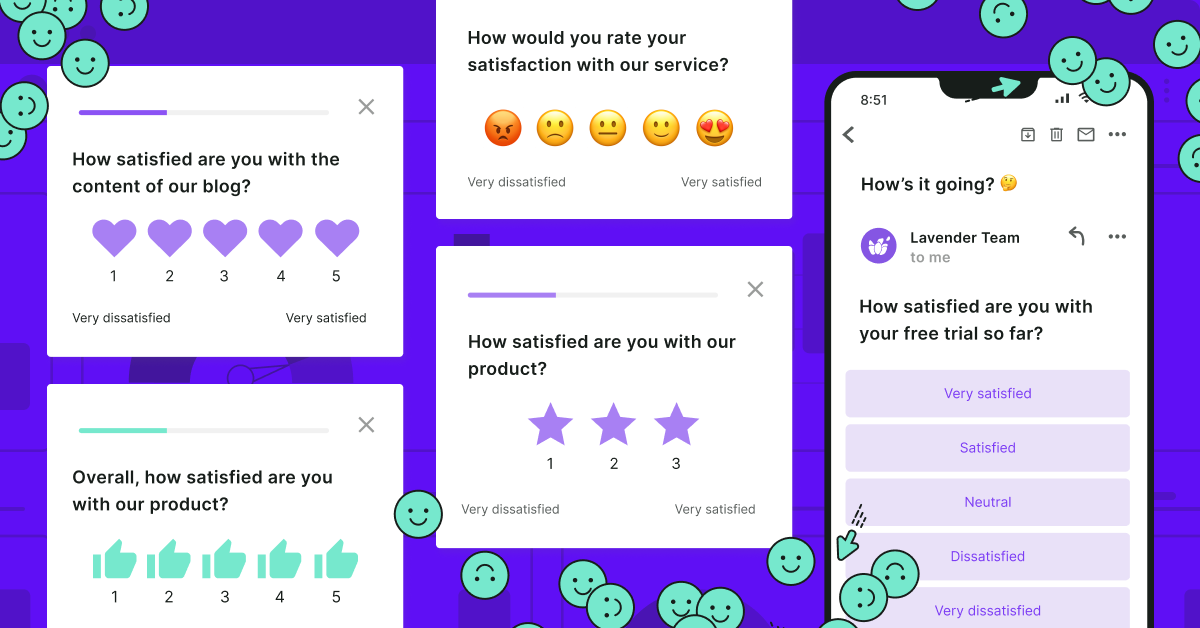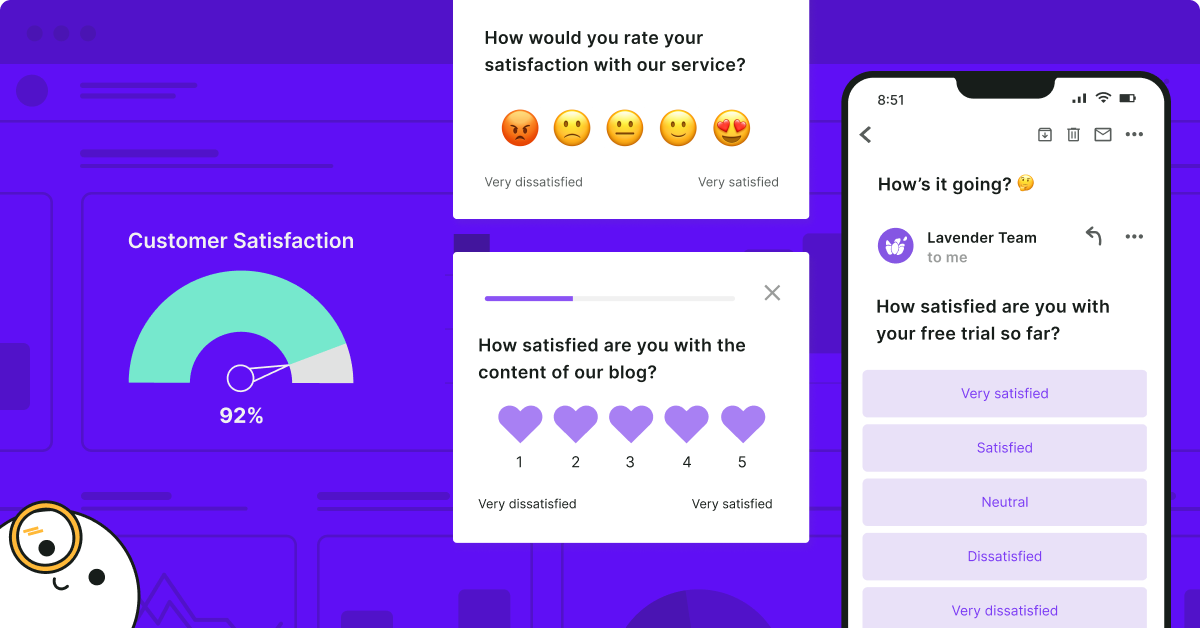If a customer is unhappy, it’s easy for their feelings to quickly spiral to epic proportions. We’ve all seen it before: negative comments on social media, a flood of bad reviews, and any other form of online–therefore public–communication to express their dissatisfaction.
There’s an easy way to avoid ces terribles événements: make sure everyone in your company knows how to respond positively when dealing with unhappy customers. Crafting well-considered replies goes a long way toward helping an angry customer feel acknowledged.
Today, we’re going to show you how to tackle negative customer feedback and turn it into something that will benefit your business.

How to respond to negative feedback
Negative feedback is good for you. It helps your company improve and grow better than the competition.
However, if a disgruntled customer takes it online, everybody on Facebook, Google My Business, or Yelp can see the one-star rating and the customer's report of their poor experience with your business.
That doesn’t have to ruin your branding on the web. A bad review can become a good opportunity to show you care about customer satisfaction.
Below, you will find seven proven steps to respond to negative feedback and turn an uncomfortable situation into something constructive for customers and your business.
1. Address the customer by their name
It’s just a little trick, and you may think that there’s no need to do this. Sure, you can start your response with a quick hello, or a “Dear Sir,” but it’s not as potent as writing the person’s name.
Unless you’re running anonymized surveys, the name of the person is stated in the review, so it wouldn’t take a lot of effort to find it out. By saying their name and referring to their feedback, you show that it’s not an automatic, scripted response, and they’re talking to someone who’s going to take care of their problem.

If the issue they have with your business can be solved at all, the reviewer can be more cooperative if you start the conversation in a friendly way. This restaurant owner did it the wrong way:

The fact that the restaurant owner replied and referred to a particular comment is amazing, but the overall execution leaves a lot to be desired. This brings us to another point…
For instance, if you run a hotel or rent out a property and you'd like to find out what your customers think, we suggest trying out this survey template:
2. Apologize to the customer
You may be thinking that a particular customer knows nothing about the business, their claims are false, and is simply not right to put up a review. You may think they were in a bad mood and you couldn’t do much in terms of service. You may think it’s a competitor, not a genuine reviewer.
Either way, you have to say sorry to them to get their attention. Take a look at how this restaurant owner handled a one-star review on Yelp. He disagrees with the reviewer but apologized nonetheless.

When you’re agitated, it might be hard for you to say that you’re sorry. However, this one short word can take your brand places and soften the (already damaged) experience for your customers or potential clients.
This is not a brand-new thing. For this purpose, many companies have introduced new procedures. Probably one of the most popular ones is the Starbucks LATTE rule, defining how all Starbucks employees should approach virtually any customer issue. For your brand, that might be a great starting point when dealing with negative feedback.
3. Sympathize with the customer’s problem
Just as in the previous step, you don’t have to agree with the customer to understand their frustration. Imagine yourself in their shoes. You come expecting great service, but you find it disappointing. It probably won’t make your day after all, right?
Below is a customer who expected just normal service, but was extremely disappointed:

This is why a person who left a negative review deserves your understanding. Make sure you tell them you understand their feelings to ease up the conversation.
And if you want to collect customer reviews, you don’t have to go about it the hard way! Just use our survey template and you can gather reviews in minutes:
Pick n Pay (despite the holiday season) was quick with their answer and used all the right words: thank you (twice!), please, help us assist, kindly elaborate.

Neither will this solve the problem nor improve the client's experience, but this is something that customers expect in 2023. When they hear words of sympathy, they may be more willing to understand you as well instead of escalating the situation.
4. Say you’re solving the problem
In some cases, a reviewer who doesn’t like your company is only guided by preferences.

A person's preferences are likely to remain the same. If you run a public business, you need to account for these kinds of reviews.
In many other cases, though, there might have been a problem with your business. Your customer service rep was rude, shipping took longer than expected, or the product came damaged. Basically, the customer wrote a review instead of talking to support.
If that’s the case, you have to help the reviewer. But taking the matter to your customer support team doesn’t cut it. The review is on display now, and you have to put your reaction on display as well. You’re doing it not only for the reviewer, but also for others, who might follow the thread or stumble upon it in the future.
Look at Pick n Pay (again!): they kept EVERYONE updated, referred to the comments and messages received from the customer, and reassured them that the situation was being investigated.

From the perspective of someone who wants to buy from you, finding you respond to a random review offering help is a good sign. A potential customer learns you care about your users and can sort things out if something goes wrong.
Mention reaching out to the reviewer to solve the problem, and the impact of a negative review might be minimized.
5. Offer a gift
Another way to try to give a reviewer a more positive impression of your business is by asking them for a second chance. If the problem they’ve had is out of the ordinary, get them to come back by offering a gift.
This can also be used to prevent negative reviews. Below is an email sent to customers who got the wrong memo. Some of them might have already expressed their opinions or contacted the company. As a precaution, Gobe decided to respond, apologize, and send a discount code.

This won't apply to every situation, but it may be helpful to have a set of such procedures on hand. You can offer a discount, or free shipping, depending on your type of business.
However, the problem your customers complained about can be a regular one. If this is the case, asking them to come back before you fix it is just counterproductive.
6. Ask the customer to change the review
Did you fix the problem the reviewer complained about? Did they come back for a discount and loved your business? It’s time to ask them to change the review.
Don’t ask about it publicly, and don’t be too pushy. If the person liked your business after they gave it a second chance, they will be willing to do it themselves.
If they don’t change it, after all, it’s okay. You’ve done the bulk of the review-related PR already.
7. Accept negative reviews
Some reviewers just don’t like your business. It’s the price, the style, or one negative experience they’ve had with you. This customer took it against a hotel even though he liked his stay.

You can’t do anything to change their opinion. The good thing is you don’t have to. Respond with grace, apologize, and focus on getting more positive reviews instead of changing negative ones, as in the example below:

After receiving negative feedback, the manager thanked the customer for it, apologized, and even invited more information about the experience.
It comes as no surprise, then, that out of the hotel’s almost 1,400 Tripadvisor reviews, only 2 are “terrible”.
How to gather positive and negative customer feedback with Survicate
It can be daunting to scan social media to find feedback about your business. Getting feedback on your own social media page or on specialized websites is easier to monitor, but it’s still on the reactive, not proactive side.
Monitor your performance by gathering feedback yourself. This will make sure you prevent many negative reviews from popping up in the first place.
With Survicate, gathering feedback from your clients is easier than you may imagine. There are multiple ways to do it.
1. Send your customer a CSAT survey
In CSAT surveys, there is one quick question that can serve as a starting point for asking more.
With Survicate, you can create a CSAT survey in a few clicks and send it to the customer using their preferred channel.
It’s non-intrusive and doesn’t ruin customer experience by requiring a lot of time to complete. It might also show you whether you have a problem with your website, products, or internal processes.
2. Send or embed a quick NPS survey
The NPS survey can serve as a gateway to more detailed feedback. The hardest part about feedback is getting customers to give it, and both positive and negative feedback comes with valuable lessons. NPS surveys are easier to complete than multi-level surveys with dozens of questions so they might attract a higher response rate.
We like how simple, neat, and welcoming it looks:
It doesn't stop there, since the respondent can be navigated further based on their answer.
For instance, if your customers click 9 or 10, they will be asked to leave a review on a site such as TripAdvisor. If they give you fewer points, they will be directed to a feedback form. Set it up according to your needs.
3. Set up a feedback button
When is it possible to prevent negative feedback? As soon as your customers feel compelled to give it. Survicate’s Feedback Button gives them a chance to express their disappointment when they feel your service isn't up to their standards.
Focus on dealing with customer problems early on, use a variety of customer satisfaction metrics, and you may have to deal with public negative feedback significantly less often.
Survicate won't erase negative comments or promise they won't happen again. However, by implementing precautionary measures and conducting surveys with your customers, you can prevent a lot of negative feedback.

Respond to negative feedback with Survicate
Customer feedback can make or break your company, and you probably would prefer the former. Your business reputation is largely determined by what customers say about you on social media and online review sites. Keeping track of them is one thing, but responding to feedback—even when it's not positive—is another.
By responding to negative feedback, you can make a positive impact on your brand reputation, get to know your customers better, increase their engagement, and even boost financial outcomes.
In addition, it can help you stand out from your competitors if they are passive in gathering and responding to feedback.
With Survicate, you can collect feedback in minutes. It’s easy and intuitive, so how about signing up for free and starting with your first survey right now! Also, you can foster your decision making checking our newst ranking of best customer satisfaction tools.

.webp)






.svg)
.svg)
.svg)

.svg)


.svg)







.svg)




.svg)

















.svg)






























.svg)

.svg)
.svg)

.svg)



.svg)





.jpg)
.svg)

.svg)







